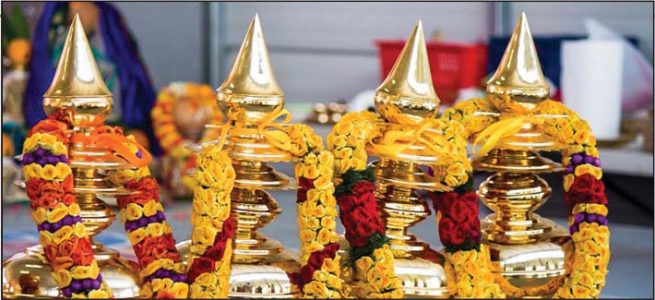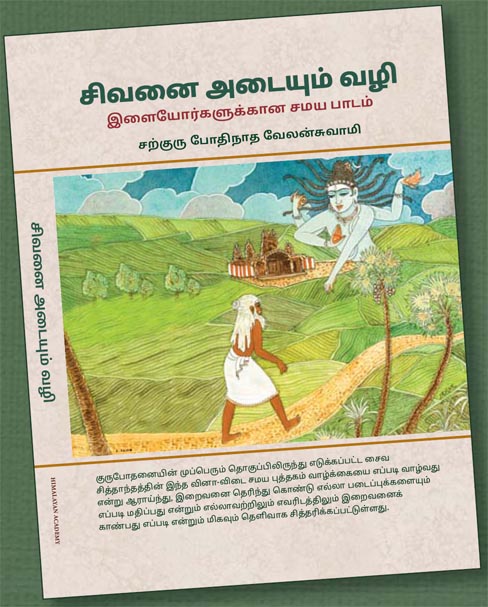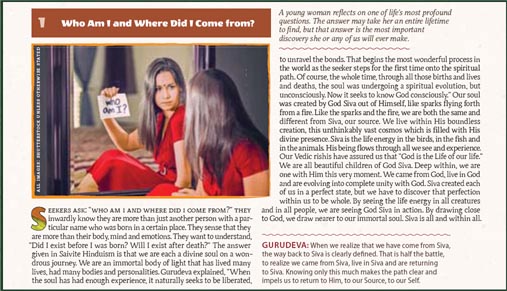I believe any sensible man is unknowingly a Hindu
ALAIN DANIELOU (1907-1994), French historian, Indologist and noted Western convert to and expert on Saivite Hinduism
The distinction between liberated, aspirant and bound subsists only so long as this Elixir of Experience is unknown to one. The enjoyer and the enjoyed, the seer and the seen, are merged in the non-dual, which is indivisible. The devotee has become God, the Goal has become God, the Goal has become the path; this indeed is solitude in the universe. DNYANESHWAR (1275–1296), 13th-century Marathi saint, poet and philosopher
In a sense, I argue, Hinduism is an open-source faith allowing many ideas to flow in and providing nuances and directions of thought that assimilate and accommodate constantly and consistently. SANJEEV SANYAL, Indian economist, bestselling writer, environmentalist and urban theorist
Keep the name of Rama always in your mind, remembering it with love. It will feed you when you’re alone, bless you when you feel cursed, and protect you when you’re abandoned. To the crippled it’s another limb. To the blind it’s another eye. To the orphaned it’s a loving parent. GOSWAMI TULSI DAS (1532-1623), Hindi poet
Not to know the Self is, indeed, the greatest of tragedies; it is to lay waste our powers and miss a chance that has been given to us, so rare, so sacred, so divine. SWAMI CHINMAYANANDA
In Sanatana Dharma, there is no single life, no single judgment, or eternal punishment. In fact, there is no judgment at all as such, for the idea is to help and not to judge and condemn. The inner dynamics of incarnation is not reward or punishment but self-improvement, and ultimately self-discovery and self-recovery, moksha. RAM SWARUP (1920-1998), a foremost spokesperson of Hindu spirituality and culture in India
“Fetch me a fruit of the banyan tree.”
“Here is one, sir.”
“Break it.”
“I have broken it, sir.”
‘What do you see?”
“Very tiny seeds, sir.”
“Break one.”
“I have broken it, sir.”
“Now what do you see?”
“Nothing, sir.”
“My son,” the father said, “what you do not perceive is the essence, and in that essence the mighty banyan tree exists. Believe me, my son, in that essence is the Self of all that is. That is the Truth, that is the Self. And you are that Self, Svetaketu!” Chandogya Upanishad, ch. 6
Within man exists an ocean of bliss. Yet he willingly prefers to live a life full of misery, pain and suffering. This is the tragedy of human life. JAGADGURU SRI CHANDRASEKHARA BHARATI MAHASWAMIGAL (1912-1954), 34th pontiff of the Sarada Peetham
Sanatana means Eternal. In its purest form, this religion is Sanatana, because it is based on Truth. Truth is immortal and is never annihilated. Our true Sanatana Dharma, in its purest form, can never be exterminated. SWAMI RAMA TIRTHA (1873-1906), teacher of Vedanta
We’re not trying to explain the unexplainable, just trying to help those who are sincere figure out where to go to experience it. SATGURU BODHINATHA VEYLANSWAMI, publisher of Hinduism Today
If you live completely each second, you will experience many days inside each twenty-four hours. SATGURU SIVAYA SUBRAMUNIYASWAMI (1927-2001), founder of Hinduism Today

DID YOU KNOW?
4 Types of Temple Consecration
By Selvanathan Sthapati
THE HINDU TEMPLE IS A LIVING ORGANISM; it is considered a form of God. Extensive rituals, spanning several days, are performed by trained professional priests to establish the sanctity of a new temple. Similar rites are performed to restore the sanctity of a temple after renovation and other disturbances. These rites are called kumbhabhishekam.
A little known fact is that there are four distinct types of kumbhabhishekam ceremonies: avardhanam, anavardhanam, punaravardhanam and andharitham. These mystical rites are clearly explained in the Mayamatha, Manasara and Kasyapa Shilpa Shastras and in some Agamic texts.
Avardhanam means renovating and restoring an abandoned temple, be it an old or ancient structure. After the physical renovations, the temple is empowered with Agamic rituals and the performance of avardhana kumbhabhishekam.
Anavardhanam names the form of kumbhabishekam performed to consecrate a newly built temple.
Punaravardhanam refers to repairing and renovating an existing temple. This is normally done every 12th year. The rite performed thereafter to restart the temple is called punaravardhana kumbhabhishekam.

The fourth type of consecration is andharitham. It is performed to remove any disturbance to the spiritual ambience which has been caused by either natural or unnatural happenings. Natural disturbances include flooding or any damage caused by fierce weather. Unnatural disturbances include theft, military attacks, or a death occurring in the precincts. These disturbances are rectified and the spiritual ambience renewed by reciting Agamic mantras and performing fire ceremonies for peace.
BASICS
Nine Hindu Beliefs
1. Hindus believe in a one, all-pervasive Supreme Being who is both immanent and transcendent, both Creator and Unmanifest Reality
2. Hindus believe in the divinity of the four Vedas, the world’s most ancient scripture and venerate the Agamas as equally revealed. These primordial hymns are God’s word and the bedrock of Sanatana Dharma, the eternal religion
3. Hindus believe that the universe undergoes endless cycles of creation, preservation and dissolution
4. Hindus believe in karma, the law of cause and effect by which each individual creates his own destiny by his thoughts, words and deed.
5. Hindus believe that the soul reincarnates, evolving through many births until all karmas have been resolved, and moksha, liberation from the cycle of rebirth, is attained. Not a single soul will be deprived of his destiny.
6. Hindus believe that divine beings exist in unseen worlds and that temple worship, rituals, sacraments and personal devotionals create a communion with these devas and Gods.
7. Hindus believe that an enlightened master, or satguru, is essential to know the Transcendent Absolute, as are personal discipline, good conduct, purification, pilgrimage, self-inquiry, meditation and surrender in God.
8. Hindus beliece that all life is sacred, to be loved and revered, and therefore practice ahimsa, noninjury, in thought, word and deed.
9. Hindus believe that no religion teaches the only way to salvation above all others, but that all genuine path are facets of God’s Light, deserving tolerance and understanding.




Hardcover, ISBN 978-1-934145-72-2, $25.00
Also in popular e-book formats
Available in English or Tamil at:
www.minimela.com
himalayanacademy.com/view/path-to-siva

Sixty-eight lessons based on Satguru Sivaya Subramuniyaswami’s Master Course Trilogy for passing our tradition on to the next generation, and the next…

Path to siva presents all of the important teachings of the Saivite religion. It is written with youth in mind, but is also ideal for anyone wanting a condensed version of Gurudeva’s 3,000-page Master Course. Each illustrated lesson is short—just one or two pages—but packed with information. Here our youth can find answers to questions about God, Lord Ganesha, Lord Murugan and the devas—how they can help us in our lives and how to contact them through temple worship and home puja. You will find clear explanations of karma, dharma and reincarnation, and how to use japa, meditation and affirmations to make your life better. You will learn the best ways to live in order to achieve your most important goals. The lessons include insights on home life, getting along with others, religious tolerance, vegetarianism and caring for the environment. They cover challenging philosophical areas, like death and dying, sin and evil. These short essays will provide a clear understanding of Hindu practices, beliefs and philosophy and give you a deep comprehension of life that few people have. The book was designed as a tool for teachers and for parents with youth, a focus text for exploring Hinduism together. Discussing one lesson a week can keep the family conversation going for more than a year.
